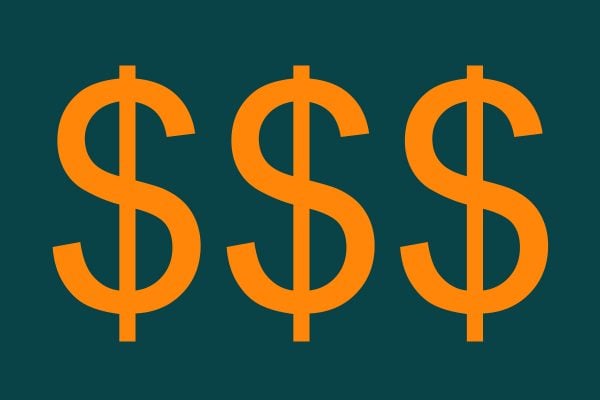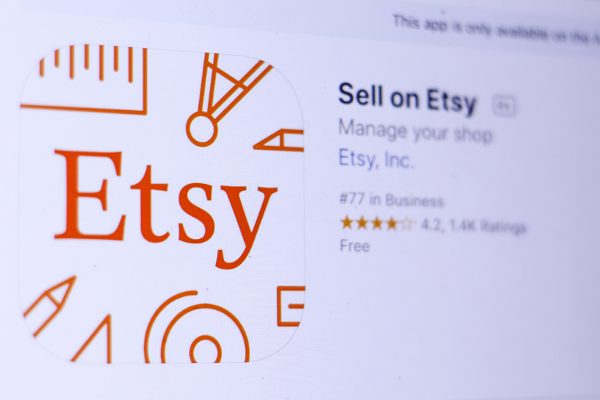I recently had cause to examine listing strategies, for selling high value items, on eBay. Looking at items in the £2500.00 range there are normal choices of core, (Auction and Buy it Now (BIN) listings) and Shop Inventory Format (SIF).
Due to the high ticket price of the items auctions can be high risk, unless reserve prices are used. Although there’s a healthy market on eBay, if too many auctions are listed they will inevitably fail to reach acceptable prices, if you flood the market with auctions. Limiting the quantity of auctions will increase bids and it’s just not viable to list several per day to keep sell through rates high.
Reserve fees are punitive, at 2% for each £2500.00 item listed the reserve fee is £50.00, and it’s non-refundable! The only way to keep exposure on core site, to drive traffic to your eBay shop, is to use BIN listings.
BIN listings have an obvious advantage of driving immediate purchases, with greater visibility than SIF. SIF listings are only of value if you’re driving traffic to your eBay shop through auctions Reducing the number of auctions running concurrently on the site lowers the effectiveness of using SIF.
You’d think with lower visibility that SIF listings would prove to be a cost effective way to list, and looking at listing fees this does appear to hold true. When launching a multiple item listing BIN, fees are capped at £3.00. In comparison with SIF listings at £0.11 for a 30 day period, to keep a BIN listing for the same period it will be relisted twice with fees of £9.00 (plus any listing enhancements).
Examining the situation further reveals that listing fee’s aren’t the end of the story however. A £2500.00 item sold on SIF will attract a Final Value Fee of £61.30, whereas the same item sold from a BIN listing incurs a lower FVF of £53.35. If the higher visibility of a core listing gains one sale per month, then the net difference in fees is negligable at just £1.05. But that’s just one sale with (hopefully!) many times that in margin. Plus of course every business only makes money when they churn their stock – investment in stock which sells slowly and sits on the shelf is dead money that’s not working for you.
If you have a range of high end products and list them all as BIN, three times per month (on ten day listings), and can achieve one additional sale per line per month, with BIN listings in comparison to SIF listings, then the listing strategy pays for itself. There is also the added momentum in that more core listings (in general) produces a higher percentage of sales. Listing 10 items may get a sale, but listing 100 items will normally achieve more than a ten fold increase in sales. If you’re also listing less auctions with reserve fees, which previously were needed for exposure, you’re saving even more in listing fees.
The higher the value of your items the more compelling the case for listing less SIF items and more core multiple item BIN listings. For each product line you should consider if changing a SIF to core will result in one or more additional saless per month. If this is acheiveable through the higher exposure of your lisitings then SIF just isn’t cost effective.
Looking at eBay’s stated benefits for SIF listings they are debateable: Low cost listings is true, but only if they don’t achieve sales, one additional sale per month is more than justification for not using them. Longer duration listings are great but you need auctions to drive traffic to them and reserve fees are punitive. Inventory management is great, but if you’re selling high ticket items it shouldn’t be a problem to use off line inventory management, or a third party listing tool which manages it for you.
For high price goods the advantages of SIF can be outweighed by the costs. Overall BIN listings gain greater exposure and comparable fees based on just one sale per month. If the higher exposure gains more than one sale per month there is no question, SIF is not only costing you money but it’s driving your sell through rate down.
I’m unconvinced by the current eBay shops model, I don’t think eBay have the correct balance of fees and exposure. Because SIF listings are largely reliant on the seller to drive traffic from core listings, fees should be lower. For those that don’t remember the original shops fees they were £0.05 insertion for 30 days with the same FVF as core listings. When SIF appeared in core, the SIF insertion fee was lowered to £0.03 and FVF were slightly higher at 6.75% up to £29.99, 5.75% to £599.99 and 1.75% over £600.00, with greater exposure the higher FVF were justifiable.
Now SIF FVF are at unprecedented levels, with no visibility to justify them, SIF fees are unrealistic as a high ticket business model…. unless you’re not making sales! Just one sale per month justifies consigning SIF to the scrap heap and using BIN. I’d certainly recommend some experimentation – you’re only looking to increase sales by one per month.









6 Responses
Great post Chris.
I think that shop inventory is good for listing a large amount of inventory which selling infrequently e.g.
1. Listing items which have a low sell thought rate on the core listings
2. Selling items which complement your core listings (accessories etc), to increase basket size
3. Selling long tail products (e.g. DVDs) which will come up in the shops in search option
Hi Trevor, I definately think shop inventory has a place, but over the last two years it has got less and less viable for certain product types.
You mention DVD’s but with current pricing for media there is little difference in FVF for core or shop items – 9% or 10%/8%/6%/4%/2% (and most fall into the 10%/8% tranches).
The big difference with the high value items is the punitive FVF on shop listings. In this case if you can increase sales by just one per line per month, through listing on core instead of shop inventory, it makes financial sense to do so.
Chris
While your article addresses the high ticket items, there are many more low-ticket SIF users by a high factor.
The problem for low-ticket sellers is the sheer size of ranges involved, and deciding the key attribute that guides listing construction. In a way, eBay have driven people towards uploading colour choice listings, as it is the one attribute you are allowed to include in a listing as a ‘choice’ item,
For example – a T-shirt seller (plain T-shirts with no printing) that has 6 sizes, but say 30 colours, only needs 6 listings if they can guarantee that they have constant availability of all 30 colours.
If they don’t have the constant availability, they need to list each colour seperately …… or do they?
Let’s say their initial stock delivery for any given size, is 5 pieces of each colour. First they can upload a 5-item BIN or SIF with all 30 colours = 1 listing. 5 sell but different colours.
Next upload one listing for 5 pieces with a choice of 25 colours, plus one listing for 4 pieces with a choice of 5 colours, and so on.
This strategy allows front end reduction of total listing fees, but has the adverse effect of increasing the visibility towards the back end as stock depletes.
That’s where SIF comes in – it allows you to cheaply list all 30 colours seperately (if you want to), and listing them on eBay US instead of eBay UK, makes those SIF listings even cheaper – 30 days with gallery is currently 5c + 1c, but due to exchange rates is being billed to UK registered sellers as 3p + 0p. A slight shift in Forex rates will make that 3p + 1p = still cheaper than UK by a long way. AND SIF is visible in your shop regardless of which site the browser views from.
Chris – your particular business is geared to high-ticket items, but the majority of sellers are low to medium ticket vendors and your logic, whilst valid, does not apply to them as most will probably look at SIF as being a flat 10% FVF and any reduction for higher FSV is a bonus. In your categories, you would probably look at SIF FVF’s as being an actual average of 5% – 7%, which is comparable to core, but with significantly lower ILFs.
It’s horses for courses, but I see SIF as being the best value for slow moving items regardless of price, also for large ranges that are punitive to try and shift in core, and for high ticket items that are not in the “must have now” high demand bracket (e.g. iphones or Wii or PS3) – as economies contract because of America’s budget deficits, higher ticket items are going to move slower – discounting SIF right now is a foolish move.
.
Garry:
From the first line of Chris’s post:
I recently had cause to examine listing strategies, for selling high value items, on eBay.
(Bold added by me.)
I must point out that for those rushing to examine my own business:
1) I don’t consider iphones, Wii or PS3 to be high ticket items, these products are (except maybe at launch) well under £1000.00
2) I have plenty of SIF listings
3) mountcomp doesn’t sell high ticket items in the £2500.00 range